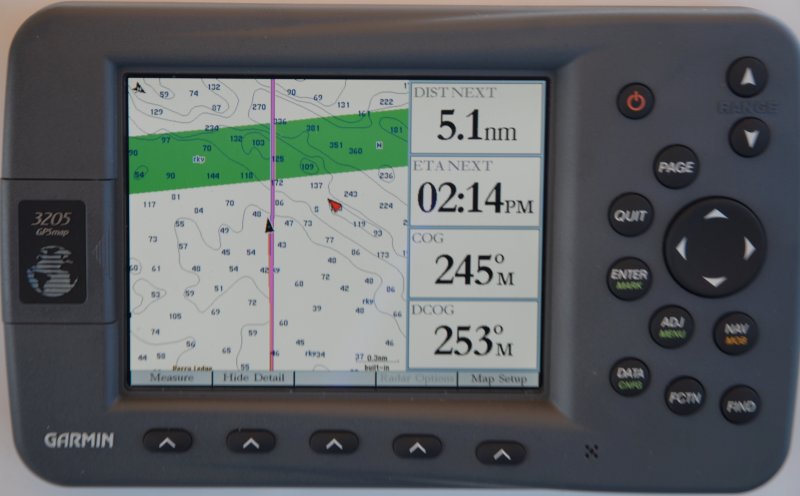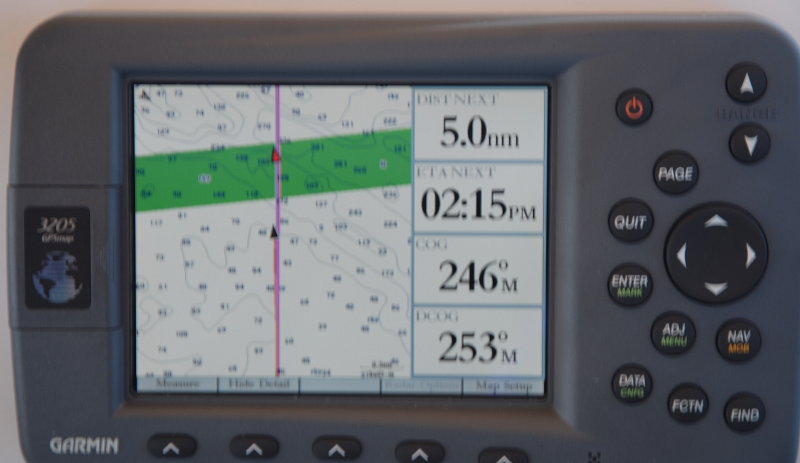As one who sails in the NE AIS is a nice addition but AIS is no panacea or a replacement for radar, at least not yet.
Roughly 95% of the boats we encounter along the Maine coast are NOT displaying AIS and neither are we with the Matrix 2100 so we are more part of the problem rather than solution at this point.
When we do get a vessel on AIS the system can be very SLOW to update the TXing ships ACTUAL location. I have actually taken photos of my screen, see below, showing the vessel off my quarter stern when the vessel TXing is now actually off my bow and already passed me. In real fog this is an UNSAFE feel good device that could potentially cause real harm if not used in conjunction with radar as a supplement or very carefully tracked. In order to make the most efficient use of the bandwidth available, vessels that are anchored or moving slowly transmit less frequently than those that are moving faster or are maneuvering. The AIS refresh rate can range from as long as 3 minutes to as fast as 2 seconds for fast moving vessels. The big problem is that not all boats are supplying SOG/STW info and you can be guessing at the refresh rate.
AIS needs to be used with respect if using them in an area that gets fog and with the understanding that at this point only some commercial ships and a small handful of pleasure vessels use and TX AIS.
These photos should give you an idea of how inaccurate, compared to radar, AIS can be. We were doing 6 - 6.2 under sail and that boat was moving slightly faster than us but not TXing SOG. Look at my position on the chart at .3 nm range compared to the AIS vessel in red. If this was in fog, and your only device for collision avoidance was AIS, this could be very dangerous if you had not been tracking it for a while or they made a sudden course change. This was in bright sun so no danger. I moved less than .1 of a nautical mile when the AIS boat went from photo position #1 to position #2 in a split second refresh rate. Not cool if in pea soup..
Sorry for the blurry photo.


